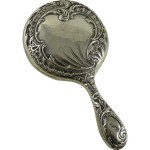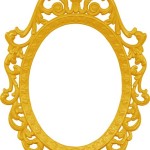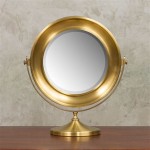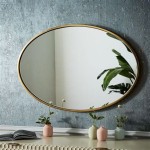What Do Mirrors Represent in Art?
Mirrors, with their reflective surfaces, offer artists a unique tool for exploring themes of self-awareness, illusion, and perception. Beyond their practical function, mirrors in art become potent symbols laden with cultural and historical significance, traversing a rich tapestry of meanings depending on the artistic context.
One of the most prevalent symbolic interpretations of mirrors revolves around self-examination and identity. The act of looking into a mirror prompts reflection, both literally and figuratively. Artists utilize this association to depict characters confronting their inner selves, their virtues, and their flaws. A mirror can serve as a window into the soul, revealing hidden emotions or truths about the subject. This can manifest as depictions of vanity, introspection, or psychological turmoil, depending on the narrative the artist aims to convey.
The concept of vanity and self-admiration is frequently linked to mirrors in art historical imagery. Think of classical portrayals of Narcissus, entranced by his own reflection, or depictions of Venus admiring her beauty. In these contexts, the mirror highlights the subject's preoccupation with physical appearance and can symbolize superficiality or self-obsession. The mirror becomes an instrument that amplifies the subject's ego and underscores themes of pride and self-love, sometimes to the point of detriment.
Beyond personal reflection, mirrors also symbolize the broader concept of truth and illusion. They present a reversed image of reality, prompting viewers to question what is real and what is merely a reflection. This ambiguity allows artists to explore themes of deception, appearances versus reality, and the subjective nature of perception. The mirror can act as a portal to alternate realities or symbolize the distorted lens through which individuals perceive the world.
Furthermore, mirrors can represent the passage of time and the ephemeral nature of beauty. As individuals age, their reflections change, serving as a constant reminder of mortality. Artists might use mirrors to symbolize the fleeting nature of youth and the inevitable decay of the physical form. This association with time can also extend to broader reflections on societal change and the transient nature of existence itself.
In many cultures, mirrors are also associated with the supernatural and the spiritual realm. They are often seen as portals to other dimensions or as tools for divination and communication with spirits. In some artistic traditions, mirrors are believed to capture and hold souls, giving them a mystical quality. These beliefs imbue mirrors with a sense of mystery and otherworldliness, making them powerful symbols in religious and mythological art.
The representation of women and femininity is another significant theme linked to mirrors in art. Historically, women have been more closely associated with mirrors due to societal expectations surrounding beauty and appearance. Artists have explored this connection in various ways, often depicting women gazing into mirrors as a commentary on societal pressures, female identity, and the objectification of the female form. The mirror can serve as both a symbol of empowerment and a tool of oppression, depending on the artistic context.
The artistic medium itself also plays a crucial role in how mirrors are represented. In painting, mirrors can create complex compositions and illusions of depth. Sculptors might incorporate reflective surfaces to interact with the surrounding environment and the viewer's perspective. The use of actual mirrors in installations and performance art further blurs the lines between reality and reflection, inviting active participation from the audience.
Mirrors in art offer a rich source of symbolic meaning, reflecting not only the physical world but also internal states, societal constructs, and philosophical concepts. Their reflective properties allow artists to engage viewers in a dialogue about perception, identity, and the nature of reality itself. From self-portraits to still lifes, the presence of a mirror elevates the artwork beyond mere representation, inviting contemplation and deeper understanding of the human experience.
The diverse interpretations of mirrors across cultures and artistic periods demonstrate their enduring power as a symbolic device. By understanding these multifaceted meanings, viewers can unlock deeper layers of meaning within artworks and appreciate the complex interplay between reflection, illusion, and artistic expression.

Beyond The Reflection Mirrors As Cultural Symbols Symbol Sage

Reflecting Identity Exploring The Symbolism Of Mirrors In Art

Symbols In Art What S There The Mirror Arthive

Symbols In Art What S There The Mirror Arthive

The Paris Review Objects Of Despair Mirrors

Reflecting The Invisible Or Distorting Visible Mirrors In Art Dailyart

Girl Before A Mirror By Pablo Picasso Meaning Painting Style Lesson Transcript Study Com

Symbols In Art What S There The Mirror Arthive

Art The False Mirror Annenberg Learner
What Are Some Examples Of S Where A Character Uses Mirror As Symbol Quora








